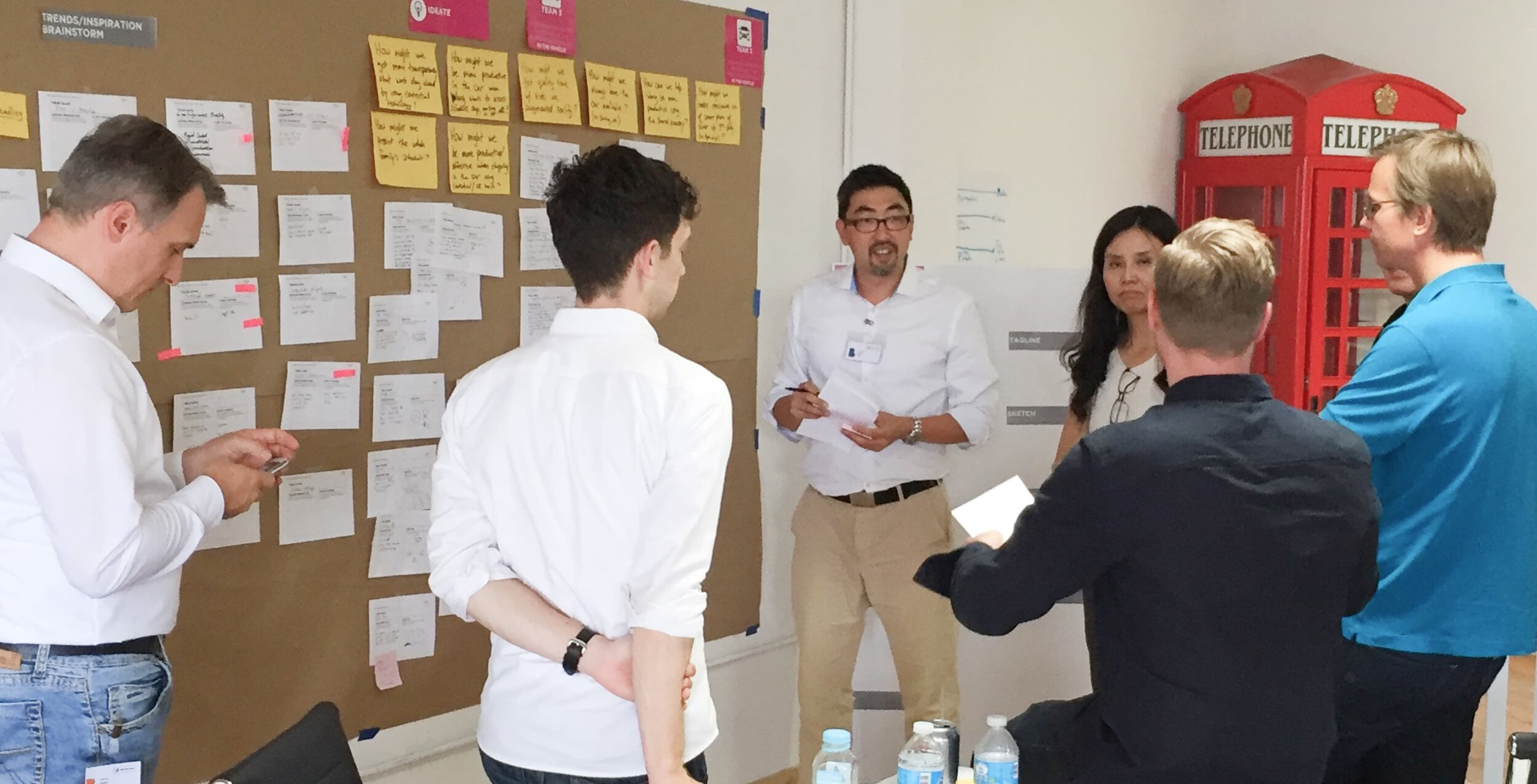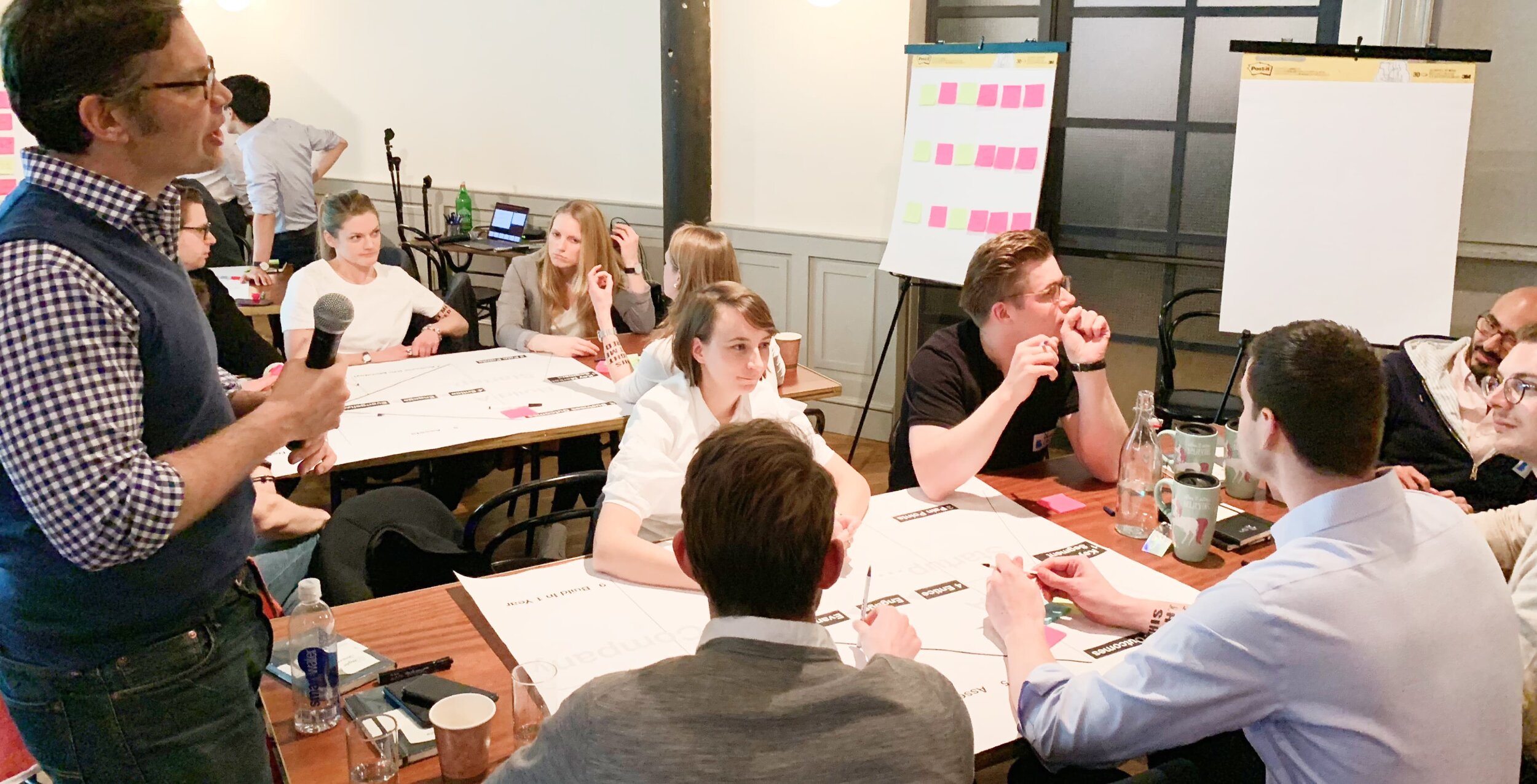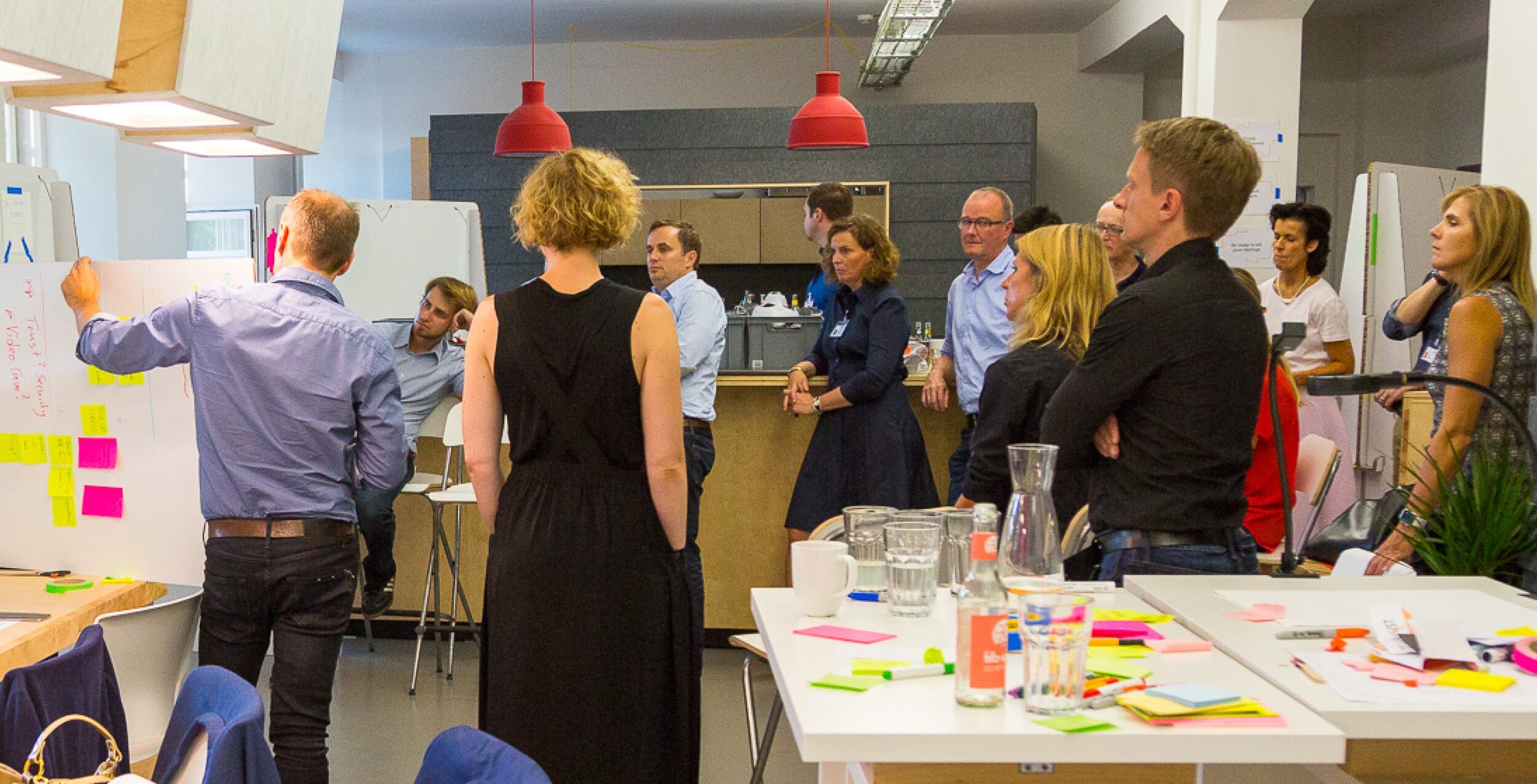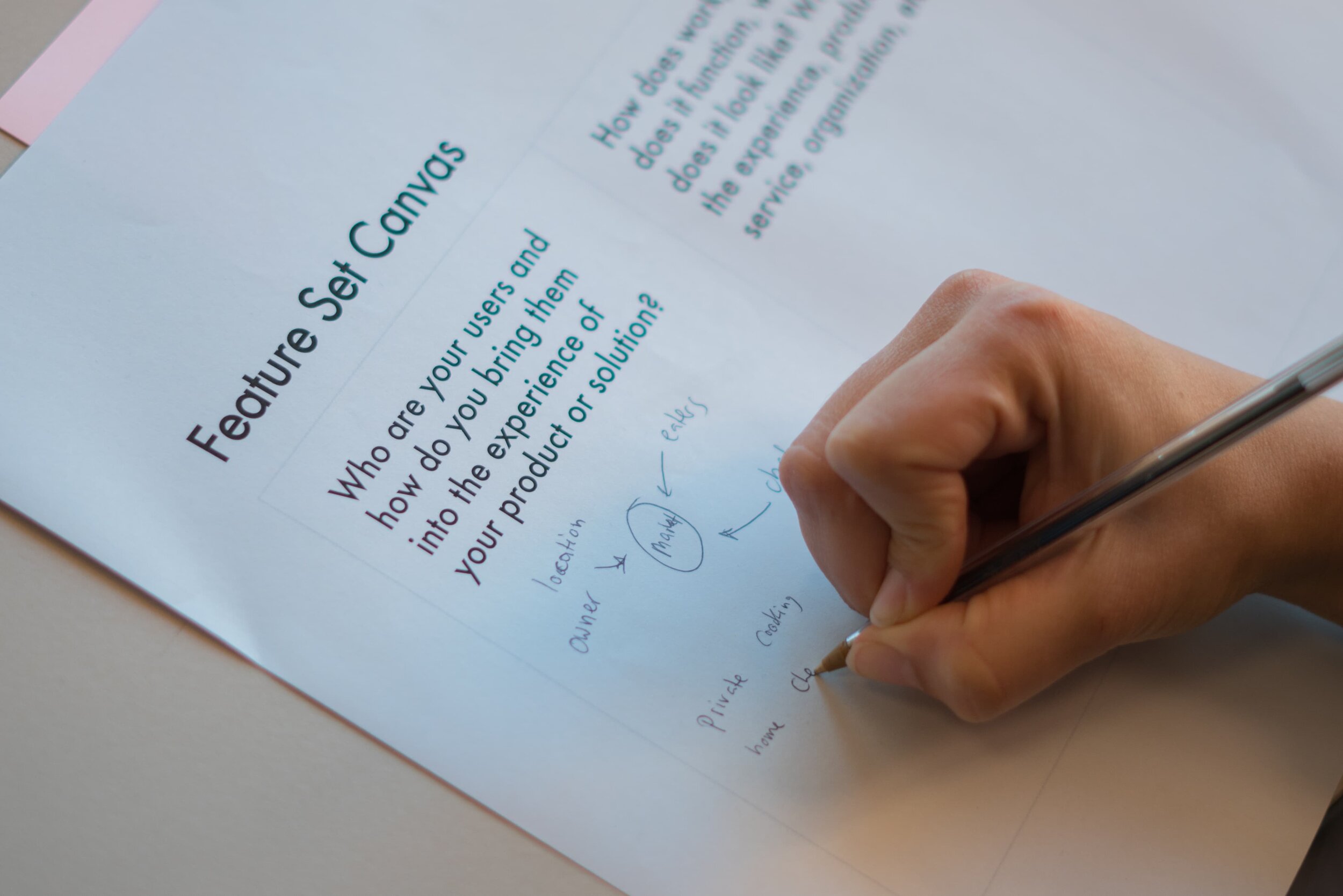
Concept Sprints
Future proof your business by developing FAST solutions
During our Concept Sprint workshops we partner with the most innovative experts, practitioners and coaches to create a workshop that is custom to your objectives and challenges, whether they are Retail, Workplace and Talent, Mobility or Tech driven. The Design Thinking methodology is not the solution to every problem, and therefore we partner with practitioners that are utilizing a variety of methodologies.

What is a Concept Sprint?
A Concept Sprint is a time-constrained, five-phase process that uses design thinking principles with the aim of reducing the risk when bringing a new product, service or a feature to the market.
Understand
Understand to be understood. The first part of the sprint requires bringing the right people together to share business goals, technology capability, and user needs. Empathy is a key ingredient to assess users behaviors and habits. The goal of this stage is to expand the understanding of the product or project in question.
Diverge
Anything is possible. Participants in the Concept Sprint should explore all possible solutions to their user’s problems. Speed is a key factor in the development of these solutions to jump start ideation. The goal of this stage is to work towards quantity, ideas should not become precious and the output will be captured as statements, sketches and in other high-level formats.
Decide
Cast your vote. Time to review all ideas and vote for the best options as individuals. Often the ideas that rise to the top are those that are simple to communicate and understand, as well as bridge a future state that doesn’t yet exist. The goal of this stage is to not only whittle down concepts and ideas, but to also ensure participants can create a team consensus post voting.
Prototype
Make it happen. Participants will develop a low fidelity prototype with minimum features so that they’ll be able to take a user through the flow of the experience. Teamwork, inventiveness and ‘hands-on doing’ are important factors to creating a prototype that can be understood without being highly polished. The goal of this stage is to ensure that the prototype is a rudimentary expression of the idea and can be effectively tested in the real world.
Validate
Try it out. Participants will observe real users trying out their prototype in real-time, capturing their feedback and learning what’s working and what’s not. When interviewing potential customers participants can gain a deeper understanding so the feedback loop can be initiated. It’s important to note that the concept sprint and the validation step is part of an iterative process, which will help participants reframe problems and allow them to improve their prototype over time.
“The Workplace Concept Sprint challenged the whole nature of how we work today and how we will do so in the future.”
— Jonathan Wright Partner, Roland Berger














